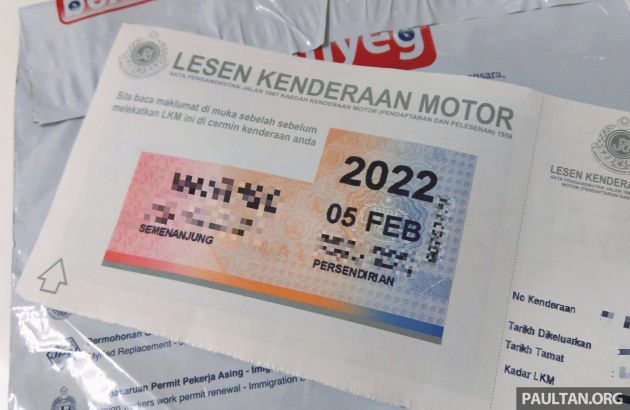At present, the road tax (formally known as lesen kenderaan motor, or LKM) fee for motor vehicles in Malaysia is determined by taking into account a number of variables, such as engine capacity, fuel type, vehicle body type/code, type of ownership, type of use and the area where the vehicle is declared to be used.
The system has been around – and unchanged – for a long while, and this has prompted the question if the mechanism should be improved and that it also properly reflects the cost of road maintenance in relation to the type of vehicle involved.
That was what senator Robert Lau Hui Yew (SUPP) asked the transport ministry in parliament last week, and in a written response, the ministry said the collection of LKM fees is considered as revenue collection of the government as a whole, and there was no stipulation under Act 333 stating that all LKM fee collections could only be used solely for the purpose of road maintenance.
The ministry added that it, working together with the road transport department (JPJ), is always looking into existing calculation methods for road tax to ensure that the structure is always relevant based on needs and in line with current policies. It said that any changes to the mechanism would first require a detailed study involving various stakeholders, but would also require a period of time to finalise.
This follows on transport minister Anthony Loke’s statement that there was a need to conduct a comprehensive review on the road tax structure, but any revision of the current rates for ICE vehicles is unlikely to happen. It does however plan to re-examine the electric vehicle (EV) road tax structure.
Looking to sell your car? Sell it with Carro.












The road-tax structure is laughable given the various tax exemption to EVs including road-tax exemption to vehicles that are practically out of reach to majority of population. However, if it takes such incentives to attract high income person to buy into the EV world, imagine what it is now to those who can’t yet afford to purchase EV. As more and more super powerful EVs hit our roads, I think EV’s should bear the big load of the revenue for the Govt to maintain the roads. Not build more highways for the EVs to travel on. More highways also mean more vehicles on road. Why use public transport then?
While looking into things can they also look into the hid and projection lamps. It’s so dangerous to drive in the nights. This is a quick fix for all that the MOT and our minister can enlighten us on. I think this has to be relooked into as it’s too dangerous to drive in the nights.
Determination by engine size has always been dumb. What happens when you have 50% of EVs running on the roads?
So here’s a suggestion:
1 – Make an estimate on a 1km test road, how much wear and
tear occurs by vehicle weight.
2 – Determine the cost of this wear and tear
3 – Set an appropriate cost per KM
4 – Pay yearly the no of KM x cost
And then there’s the question of carbon dioxide (CO2) emission. We see V8-powered hybrid hypercars like the McLaren P1 and the Porsche 918 Spyder emit way less CO2 than even a 1.0L supermini like the Perodua Axia. It really doesn’t make sense to calculate road tax using engine displacement anymore.